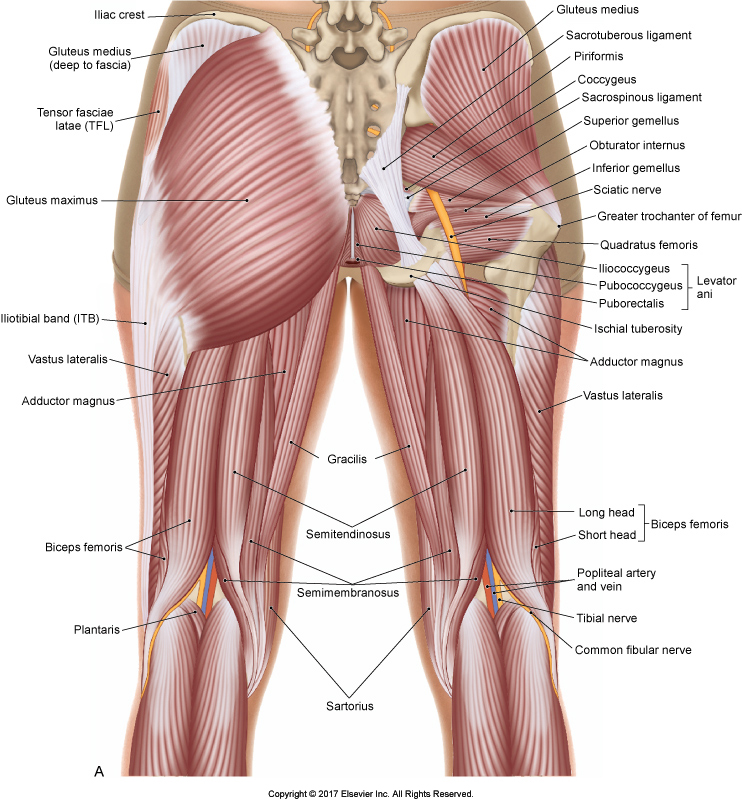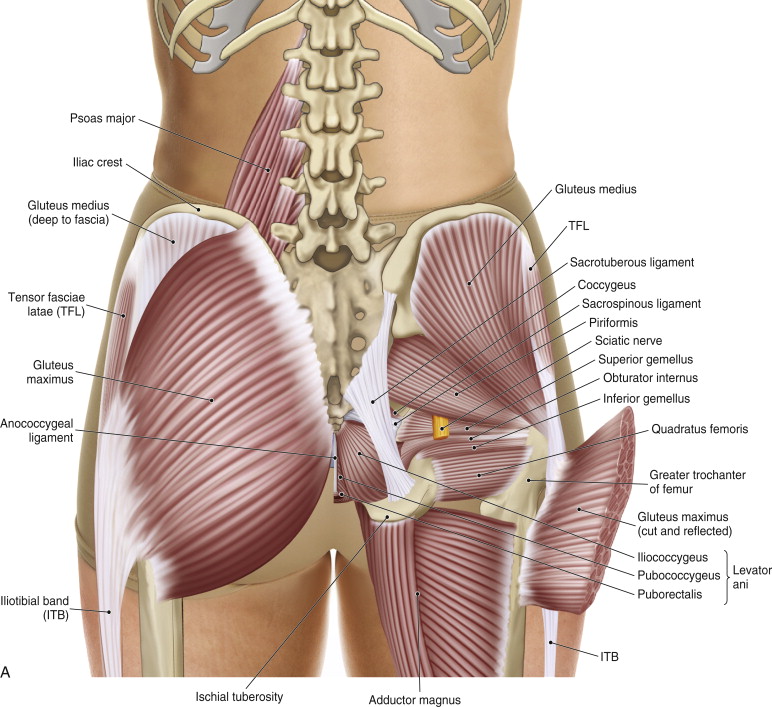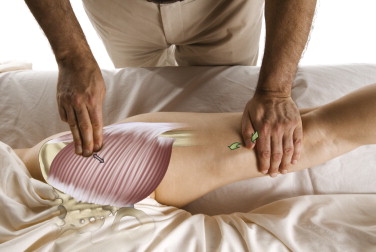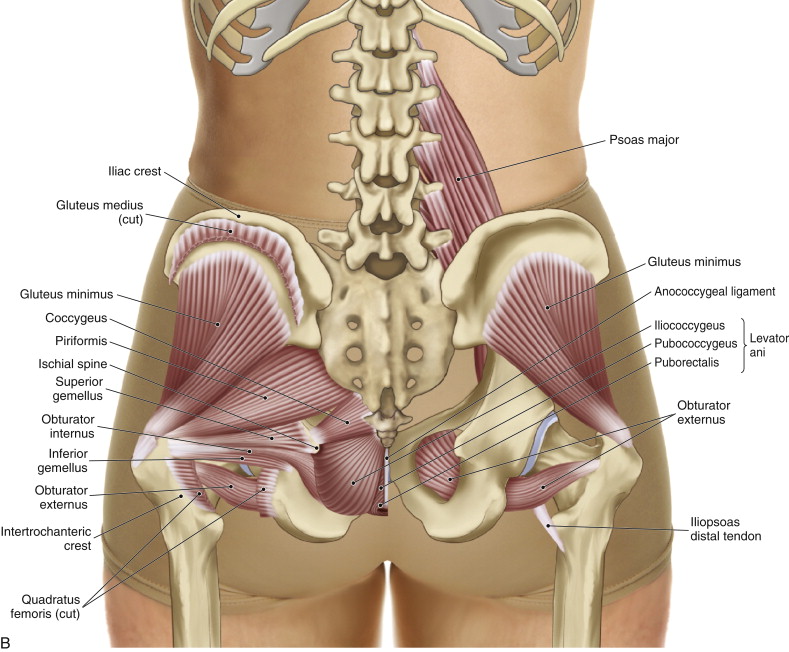Five Major Muscles of the Sacroiliac Joint

Musculature of the Pelvis and Hip Joint. Permission Joseph E. Muscolino. The Muscular System Manual – The Skeletal Muscles of the Human Body, 4th ed. (Elsevier, 2017).
This is the 2nd of 3 blog post articles on the Muscles of Sacroiliac Stabilization.
Following are the five major muscle / muscle groups that should be assessed and likely worked with manual therapy when the client presents with a sacroiliac joint condition.
- Piriformis
- Gluteus maximus (superior deep fibers)
- Coccygeus and levator ani
- Paraspinals
- Hamstrings
Joints and Muscle Stabilization
When a joint has pain and/or dysfunction, it is common for the surrounding musculature to tighten in an effort to stabilize and protect the joint. This is certainly true when there is a problem with the sacroiliac joint (SIJ).
Five Major SIJ Muscles
Following are the five major muscles / muscle groups that should be assessed and likely worked with manual therapy when the client presents with a sacroiliac joint condition.
- Piriformis
- Gluteus maximus (superior deep fibers)
- Coccygeus and Levator Ani
- Paraspinals
- Hamstrings
This blog post article covers the Gluteus Maximus & the Coccygeus and Levator Ani.
Gluteus Maximus

Gluteus Maximus and surrounding musculature. Permission Joseph E. Muscolino. The Muscle and Bone Palpation Manual – with Trigger Points, Referral Patterns, and Stretching, 2nd ed. (Elsevier, 2016)
Most often, the majority of the gluteus maximus is inhibited and weak. However, the most superior, deep fibers of the gluteus maximus run directly from the lateral sacrum to the iliac bone, and therefore cross directly the SIJ. For this reason, they are often tight when the client has a SIJ condition.
Palpation
This can usually be easily palpated and assessed. Simply find the PSIS (posterior superior iliac spine) and drop off it just laterally. If tight, myofascial trigger points (round had marbles of muscle tightness) will be clearly palpable there.

Gluteus Maximus Palpation. Permission Joseph E. Muscolino. The Muscle and Bone Palpation Manual – with Trigger Points, Referral Patterns, and Stretching, 2nd ed. (Elsevier, 2016)
Coccygeus and Levator Ani

Coccygeus & Levator Ani. Permission Joseph E. Muscolino. The Muscle and Bone Palpation Manual – with Trigger Points, Referral Patterns, and Stretching, 2nd ed. (Elsevier, 2016)
The coccygeus and levator ani are technically muscles of the pelvic floor, however, the coccygeus and levator ani are also muscles whose contraction forces cross the SIJ and therefore often tighten when a SIJ condition exists. The coccygeus attaches from the sacrum and coccyx medially to the ischial spine of the pelvic bone laterally; therefore the line of pull of the coccygeus crosses the SIJ and can be involved in SIJ dysfunction. The levator ani attaches from the coccyx to surrounding soft tissue. By virtue of attaching into the coccyx, the levator ani exerts its pull on the sacrum (by adulthood, the sacrum and coccyx often fuse), and can therefore affect SIJ mobility/function.
This is the 2nd of 3 blog post articles on Five Muscles of Sacroiliac Stabilization To Work On With Our Clients.
The 3 articles are:
(Click here for the blog post article: The Unusual Suspects: The Coccygeus and Levator Ani.)

